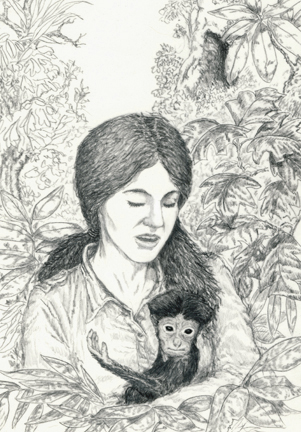Rami bent down to get a better look. Gently he rolled the animal onto her back. Hoping for signs of life he stared at her face, feeling somehow that he had seen this gibbon before. Suddenly he knew. The lifeless siamang at his feet was Singkil.
Back in camp the Hoffmanns examined the small creature they had reluctantly adopted. The baby siamang was a male, and very young, probably around five or six weeks old. Like most infant primates, his head looked very large in proportion to his body. His dark eyes, set in a tiny, wrinkled black face, looked enormous. It was hard to escape the feeling that the baby siamang looked like a little old man. Dieter and Gretchen named him Unk.

If the Hoffmanns were sure they could meet Unk’s physical needs, they were far less confident that they could meet his psychological needs. A baby gibbon, they knew, needed affectionate attention from his parents. Living in a family group, watching his parents, a baby learned how to be a gibbon--not only what foods were good to eat and how to move through the treetops, but how to interact with other gibbons. What would happen to a gibbon raised by humans?
The white-handed gibbon the Hoffmanns had raised never learned that she was a gibbon. With human parents, she naturally behaved as if she were human, too. When she grew up, Gretchen and Dieter sent her to live in a zoo, where she had a chance to live with other gibbons. But she was afraid of other gibbons, and even after three years at the zoo, responded affectionately only to humans. Undoubtedly she would never take a gibbon mate.
Dieter and Gretchen worried that the same thing would happen to Unk. Yet there was nothing they could do to prevent it. Few zoos had even one siamang. And none had a mated pair who might be able to adopt a siamang orphan. The Hoffmanns would simply have to do what they could for Unk and hope for the best.

